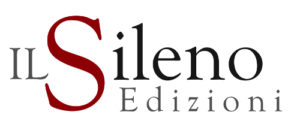(Editorial Guidelines in English language)
The proposed article must be divided into two files: an anonymous file with the text and another file containing the author’s name, any university affiliation and the reference e-mail address for communications from the editorial staff. The Editorial Board of “Filosofi(e)Semiotiche” will assign a progressive number to the file containing the anonymous article, corresponding to the number assigned to the file containing the information on the author. The file with the article will be sent to the referees, whose evaluation will be made known to the author by the Editorial Board.
At the end of the referee process, the author’s name will also be placed on the anonymous copy.
All contributions will be sent in digital format to the e-mail filosofiesemiotiche@gmail.com.
The file must have a .doc or .rtf extension. Articles in Italian, English, French, German, Spanish, Russian will be accepted.
The texts must respect the following length parameters:
40,000 characters (including spaces) for articles (including references);
20,000 characters (including spaces) for interviews;
10,000 characters (including spaces) for reviews.
The abstracts of approximately 200 words, sent to accompany the articles, must be written in English and transmitted separately.
The texts will be written in Times New Roman, font size 12, line spacing 1 with paragraphs.
The title of the article will be placed on the left, in font size 14 in bold.
Under the title of the article, the following will be indicated: the author (font size: 12, immediately below the title), the institution or university it belongs to and an e-mail address (font size: 10), separated by two lines from the beginning of the text.
The paragraphs will be numbered in Arabic numerals and the sub-paragraphs will follow the Arabic numbering regulated by the point (eg 1. – 1.1. – 1.2.3. Etc.). The titles of paragraphs and sub-paragraphs will be in 12 bold type, separated by two lines with respect to the end of the previous paragraph.
If it is necessary to use other fonts in the article, the font used must be copied and sent together with the text.
Italics should only be used to underline or highlight terms and / or short periods of particular importance, as well as for key words.
Any notes will be placed at the foot of the page (body 10 round).
The bibliographic references within the text will have the following form:
(SURNAME year).
Citations will be enclosed in low quotation marks, followed by the bibliographic reference (SURNAME year: pages).
The examples or quotes that exceed two lines in length will be separated from the text by a white line, before and after, indented to the left and right by 1 cm, in the round body 11. The examples will be numbered in Arabic numerals in brackets, ex: (1), (2). For citations, however, the bibliographic reference will immediately follow the text in the following form: (SURNAME year: pages). It is also necessary to indicate any translation by the author (my translation).
The bibliographic references at the end of the article will have the following form:
Books: SURNAME, Name (year), [edited by,] Title of the book, City, Publisher.
Articles: SURNAME, Name (year), «Title of the article» in Title of the Journal, no. xx, pp. yy-zz.
or in SURNAME, Name (year), [edited by,] Title of the book, City, Publishing house, pp. yy-zz.
Online articles: SURNAME, Name (year), «Title of the article» in Title of the Journal, no. xx, pp. yy-zz, http://ilsileno.it/filosofiesemiotiche.
Any images, graphics, tables must be sent (as well as in the text of the contribution) in a separate file from that of the contribution, numbered in Arabic numbers (eg: f.1 f.2, t.1 t.2) and indicating the correct position in the text. For optimal image definition, the following dimensions are preferred: .jpg extension and 300 dpi.
(Editorial Guidelines in Italian language)
L’articolo proposto dovrà essere suddiviso in due file: un file anonimo con il testo e un altro file contenente il nome dell’autore, l’eventuale afferenza universitaria e l’indirizzo e-mail di riferimento per le comunicazioni da parte della redazione. La segreteria di “Filosofi(e)Semiotiche” assegnerà un numero progressivo al file contenente l’articolo anonimo, corrispondente al numero assegnato al file contenente le informazioni sull’autore. Il file con l’articolo sarà inviato ai referee, la cui valutazione sarà resa nota all’autore dalla segreteria della rivista.
Al termine del processo di referaggio il nome dell’autore verrà apposto anche sulla copia anonima.
Tutti i contributi saranno inviati in formato digitale all’indirizzo filosofiesemiotiche@gmail.com
Il file dovrà avere estensione .doc o .rtf. Saranno accettati articoli in lingua italiana, inglese, francese, tedesca, spagnola, russa.
I testi dovranno rispettare i seguenti parametri di lunghezza:
40000 battute (spazi inclusi) per gli articoli (compresa la bibliografia);
20000 battute (spazi inclusi) per le interviste e le rassegne;
10000 battute (spazi inclusi) per le recensioni.
Gli abstract di circa 200 parole, inviati a corredo degli articoli, dovranno essere scritti in lingua inglese e trasmessi separatamente.
I testi saranno redatti in Times New Roman corpo 12, interlinea 1 con capoversi.
Il titolo dell’articolo sarà posto a sinistra, in corpo 14 grassetto.
Sotto il titolo dell’articolo saranno indicati: l’autore (corpo 12 tondo, posto immediatamente sotto il titolo), l’istituto o università di afferenza e un indirizzo di posta elettronica (corpo 10 tondo), separati di due righe dall’inizio del testo.
I paragrafi saranno numerati in cifre arabe e i sottoparagrafi seguiranno la numerazione araba regolati dal punto (es. 1. – 1.1. – 1.2.3. ecc.). I titoli di paragrafi e sottoparagrafi saranno in corpo 12 grassetto, separati di due righe rispetto alla fine del paragrafo precedente.
Se fosse necessario utilizzare nell’articolo altri tipi di carattere, il font utilizzato dovrà essere copiato e inviato insieme al testo.
Il corsivo dovrà essere utilizzato soltanto per sottolineare o mettere in evidenza termini e/o brevi periodi di particolare rilievo, così come per le parole-chiave.
Eventuali note saranno poste a piè di pagina (corpo 10 tondo).
I riferimenti bibliografici interni al testo avranno la seguente forma: (COGNOME anno).
Le citazioni saranno comprese tra virgolette basse, seguite dal riferimento bibliografico (COGNOME anno: pagine).
Gli esempi o le citazioni che superano le due righe di lunghezza saranno separate dal testo da una linea bianca, prima e dopo, rientrati a sinistra e a destra di 1 cm, in corpo 11 tondo. Gli esempi saranno numerati in cifre arabe tra parentesi, es: (1), (2). Per le citazioni, invece, il riferimento bibliografico seguirà immediatamente il testo nella forma che segue: (COGNOME anno: pagine). Occorre indicare, inoltre, l’eventuale traduzione dell’autore (trad. mia).
I riferimenti bibliografici alla fine dell’articolo avranno la seguente forma:
Libri: COGNOME, Nome (anno), [a cura di,] Titolo del libro, Città, Casa editrice.
Articoli: COGNOME, Nome (anno), «Titolo dell’articolo» in Titolo della rivista, n. xx, pp. yy-zz
oppure in COGNOME, Nome (anno), [a cura di,] Titolo del libro, Città, Casa editrice, pp. yy-zz.
Articoli online: COGNOME, Nome (anno), «Titolo dell’articolo» in Titolo della rivista, n. xx, pp. yy-zz, http://ilsileno.it/filosofiesemiotiche
Eventuali immagini, grafici, tabelle dovranno essere inviate (oltre che nel testo del contributo) in un file separato rispetto a quello del contributo, numerate in numeri arabi (es: f.1 f.2, t.1 t.2) e indicando la corretta posizione nel testo. Per la definizione ottimale delle immagini, si preferiscono le seguenti dimensioni: estensione .jpg e 300 dpi.





 Sostieni "Il Sileno"
Sostieni "Il Sileno"
